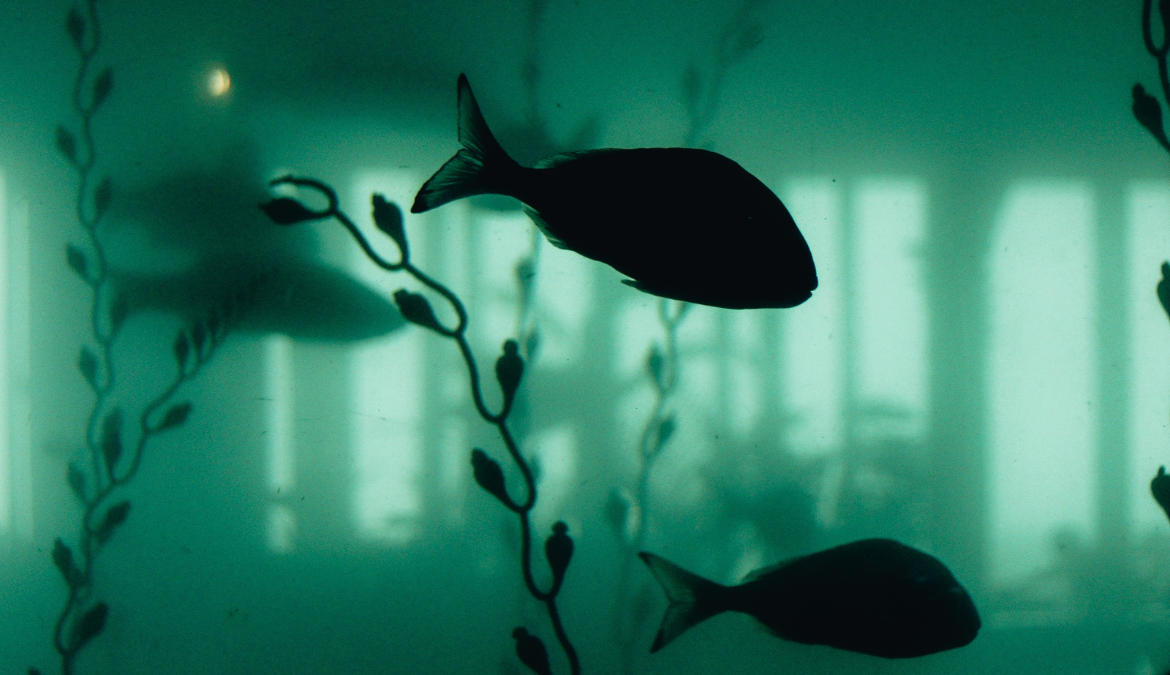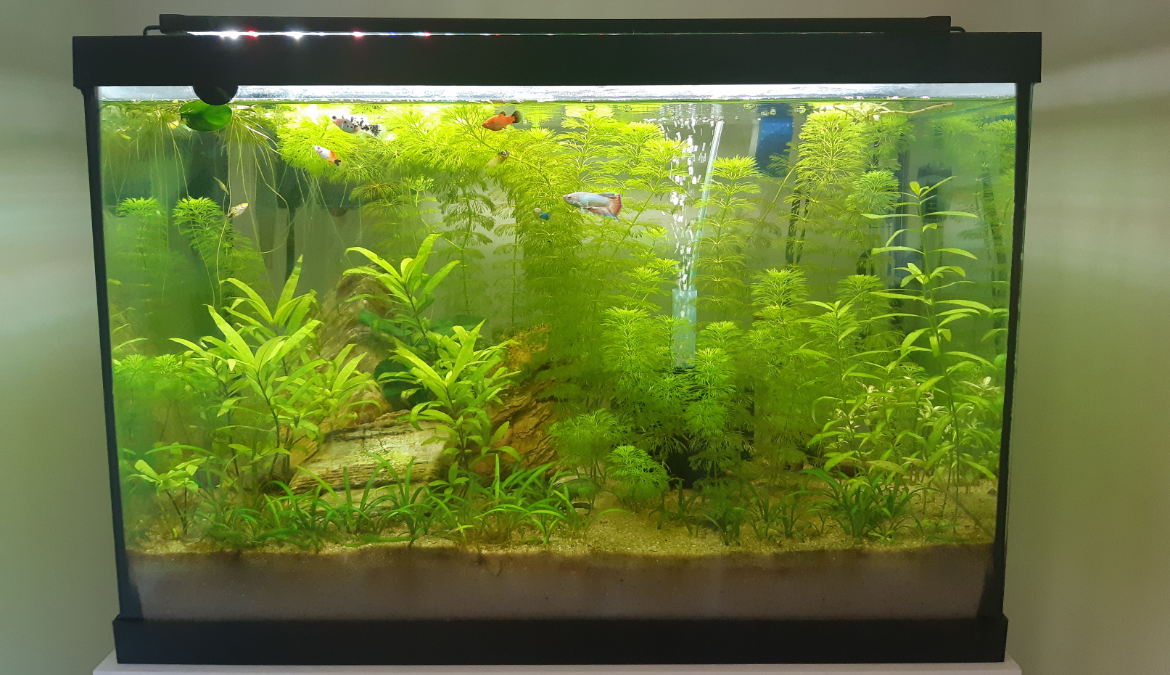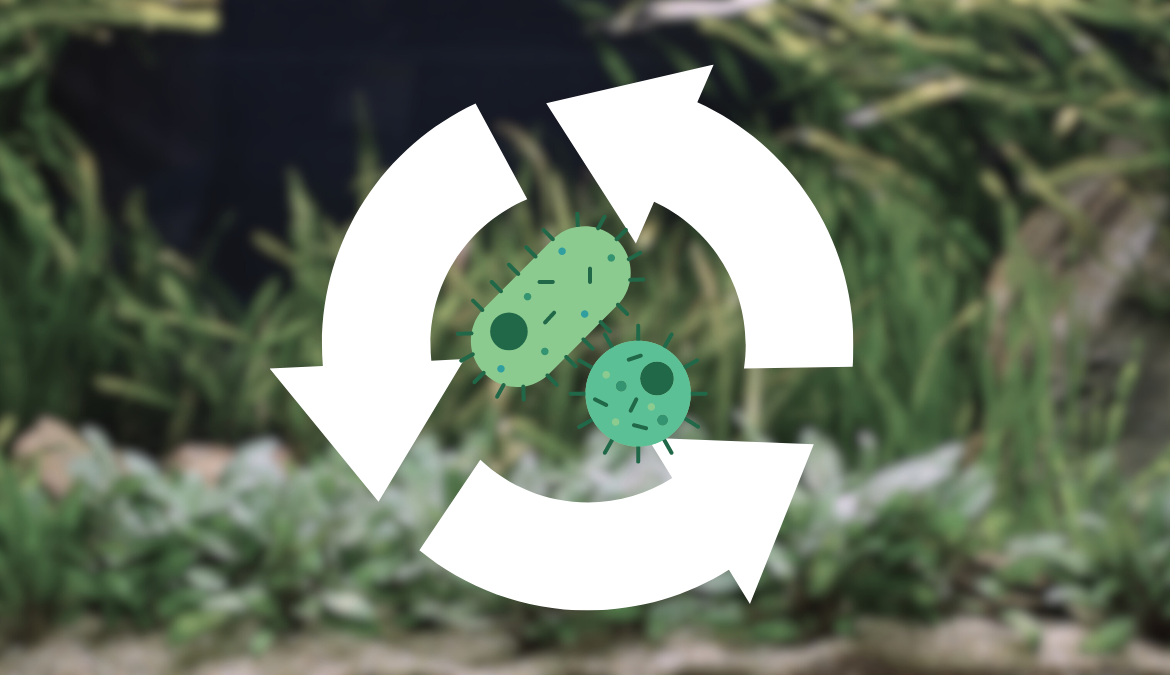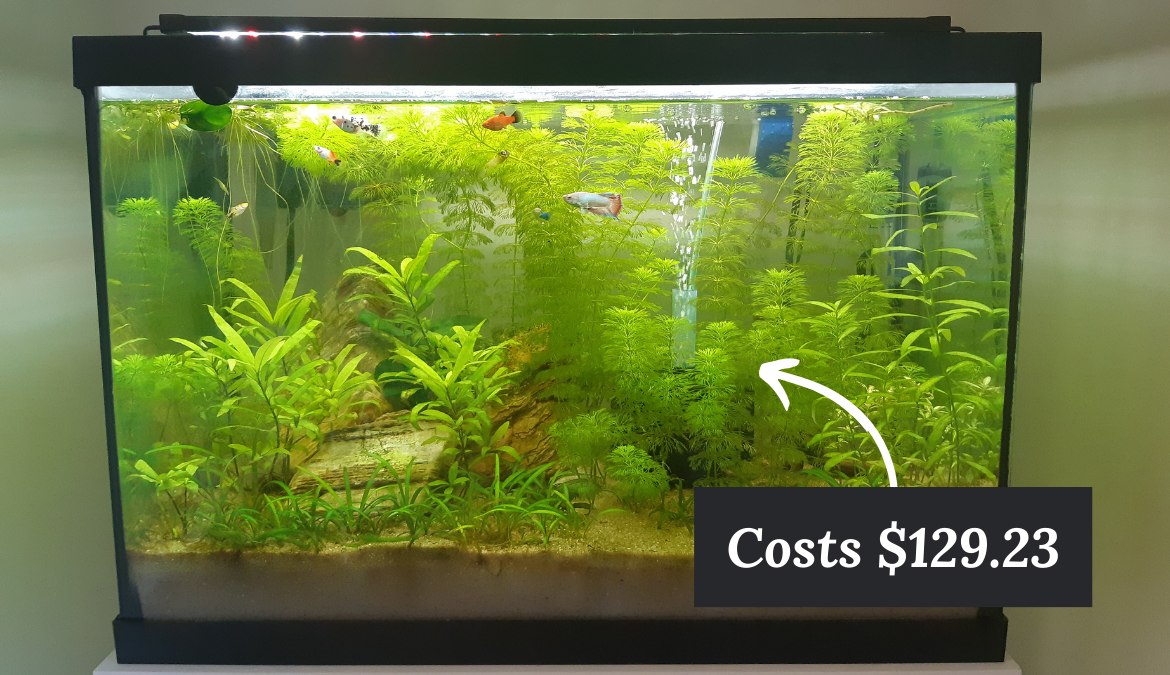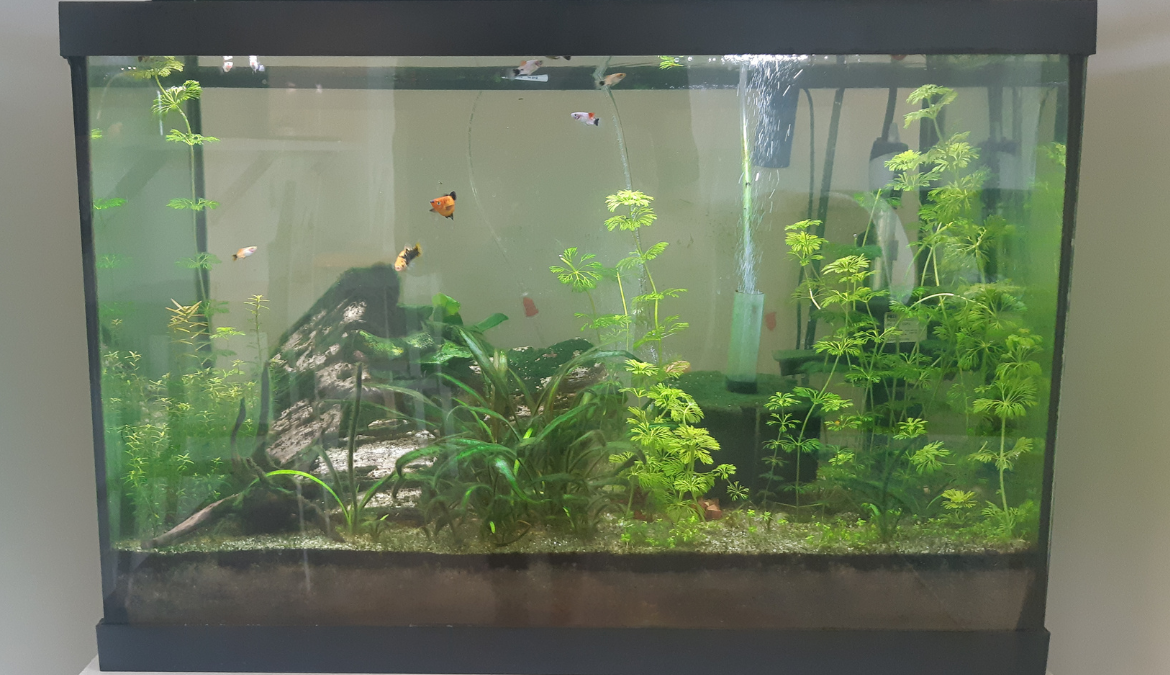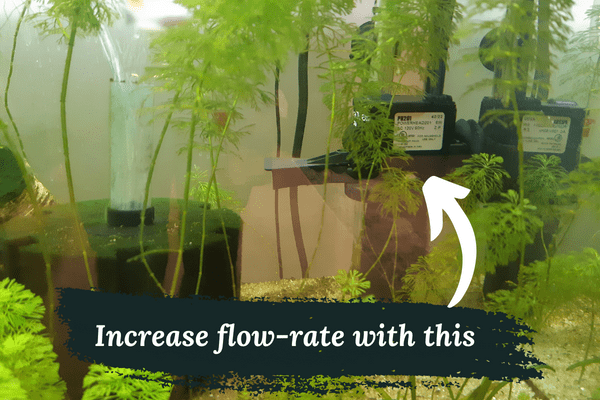There are 13 main nutrients needed for plants to thrive in an aquarium. These nutrients can be added to low-tech planted tanks easily and without artificial fertilization.
But there are a few important tank maintenance protocols that you will need to follow to make sure you’re not mistakenly removing these nutrients from your tank.
If you understand just a few key concepts then you will have no issues building a successful low-tech planted aquarium that lasts for years.
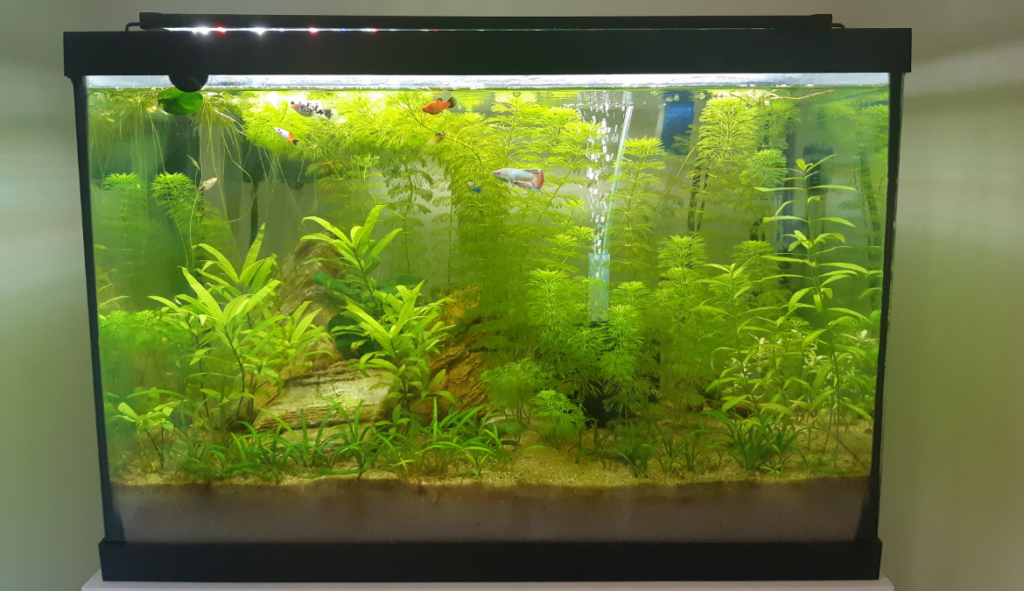
Contents
- 1 Basics of Plant Nutrition
- 2 How to Provide Adequate Plant Nutrients in a Low-Tech Planted Tank
- 3 Why carbon is limiting your plant growth
- 4 How to add more carbon to your tank
- 5 Plant nutrition mistakes to avoid
- 6 Do low-tech planted tanks need fertilizer?
- 7 Nutrient Delivery in Low-Tech Planted Aquariums
- 8 Sources
Basics of Plant Nutrition
The Role of Photosynthesis
Photosynthesis is a biological process that converts light energy, usually from the sun, into chemical energy. This process is primarily performed by plants, algae, and some bacteria.
It involves converting carbon dioxide and water into glucose (a type of sugar that serves as a form of energy storage) and oxygen.
In our aquariums, the sun is replaced with an aquarium light.
The important thing to know here is that light and carbon are necessary for plant growth.
Key Nutrients for Aquatic Plants
Nitrogen, phosphorus, potassium, calcium, magnesium, and sulfur are a few of the most important nutrients that support aquatic plant growth. These are among the 13 most important nutrients that support proper growth, metabolism, and overall health of the plants.
Below are the approximate concentrations of these nutrients required to grow thriving aquarium plants.
As we will learn, these can all be achieved in low-tech aquariums without fancy substrate or expensive equipment.
| Nutrient | Required concentration (mg/kg)* | Nutrient purpose |
|---|---|---|
| Boron | 1.3 | Stability of plant walls |
| Calcium | 2,800 | Structure of cell walls and membranes |
| Carbon | 450,000 | Fundamental building block |
| Copper | 0.8 | Enzymatic reactions used for photosynthesis and respiration |
| Iron | 60 | Chlorophyll synthesis |
| Potassium | 8,000 | Protein synthesis and the openign and closing of the stomata |
| Mangesium | 1,000 | Component of the chlorophyll molecule |
| Manganese | 4 | Splits water to liberate oxygen |
| Molybdenum | 0.15 | Nitrogen fixation and nitrate reduction |
| Nitrogen | 16,000 | Component of amino acids, nucleic acids, and ATP |
| Phosphorus | 1,400 | Energy transfer and storage |
| Sulfur | 800 | For the function of many proteins and enxymes |
| Zinc | 8 | Regulation of growth hormones |
Providing the right balance of essential nutrients in a low-tech setup not only supports plant growth but also helps prevent the growth of unwanted algae.
How to Provide Adequate Plant Nutrients in a Low-Tech Planted Tank
The Role of Soil in Nutrient Supply
The soil at the base of your aquarium is rich in essential nutrients that plants need for growth. However, it’s essential to keep in mind that the nutrient content isn’t infinite.
Renowned aquarium plant expert Diana Walstad estimates that a soil-based aquarium can supply adequate nutrients for about 25 months[2].
Of course, this duration can vary depending on several factors, such as the type of soil used, the plant species, and the tank’s overall conditions.
Importantly, organic soil provides carbon and other metal nutrients that are less abundant otherwise.
More on this in a moment.
The Contribution of Snails to Nutrient Cycling
Aquarium inhabitants like snails significantly contribute to the nutrient cycle. They perform a crucial function by breaking down fish food and other organic materials into smaller, more digestible particles for bacteria to consume.
This is the long-term solution for providing carbon and other hard-to-come-by nutrients to your plants. These nutrients are available in fish food, and then excreted by your fish as waste.
However, these nutrients are not in a form that plants can uptake at this point. This is where snails are most useful as they break down these nutrients into smaller pieces.
The bacteria then breaks down the material into its component elements that plants can then uptake.
This process by snails facilitates easier consumption by bacteria, which subsequently decompose these particles further. This decomposition process forms a vital link in the nutrient cycle, helping to break down complex materials into simpler forms that plants can readily absorb.
The important thing to understand here is that this breakdown process takes weeks or likely months before adequate plant nutrition is created. That’s why it’s important to have a nutrient rich substrate, such as organic garden soil, to provide these important nutrients in the meantime to your plants.
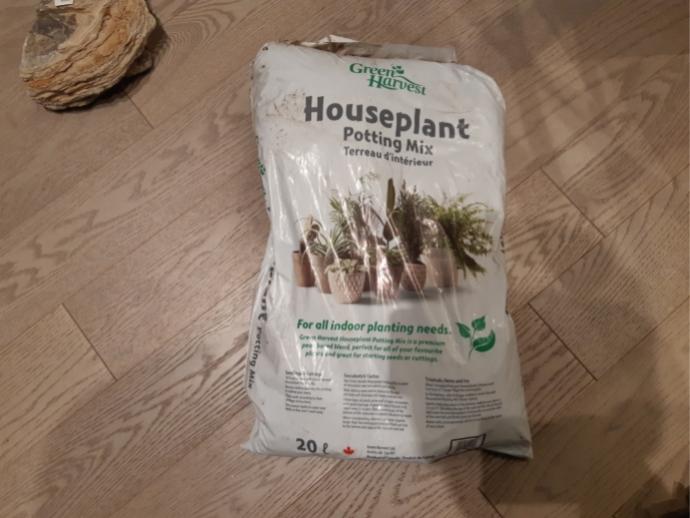
Nutrient Recycling Through Fish Excretion
Fish play a critical part in nutrient recycling within an aquarium. They excrete water-soluble forms of several plant nutrients, including boron (B), potassium (K), magnesium (Mg), molybdenum (Mo), nitrogen (N), and sulfur (S).
These nutrients, once in the water column, become readily available for uptake by aquatic plants.
This means that your fish food itself is a form of plant fertilizer. In fact, fish food contains most if not all of the necessary plant nutrients.
This is something I didn’t learn until much later. I used to regularly pump liquid fertilizers into my tanks a couple times per week. I think this is why is struggled with algae problems for so long.
Lately, I stopped adding fertilizers to my low-tech tanks and my algae problems have almost entirely disappeared.
The only time supplemental plant fertilizer might be necessary is if you inject CO2 into your tank. This increases your plant growth as well as their demand for these additional nutrients.
Metal Nutrients and Fish Waste
Fish excrete only minimal quantities of certain metal nutrients, such as copper (Cu), iron (Fe), manganese (Mn), and zinc (Zn), as well as carbon (C). These essential elements primarily accumulate in the form of fish waste or mulm, which is simply a mixture of organic materials that accumulates at the bottom of an aquarium over time.
Over time, this mulm is decomposed by bacteria, gradually releasing these metals back into the water into a form that plants can consume. This process forms a slow and steady supply of these critical micronutrients, ultimately making them accessible for plant absorption.
Important:
It’s important to not perform frequent water changes or gravel vacuuming of this mulm because it will remove potential plant nutrients.
This was another useful learning of mine as I continued through the hobby. I’ve been an advocate in the past for regular water changes and gravel vacuuming, as most experts are. But low-tech planted aquariums are far more productive and sustainable without them.
Why carbon is limiting your plant growth
Carbon is not immediately accessible in fish food or decaying plants and other organic material because it needs to be decomposed.
Bacteria in dirt substrate will decompose the soil and produce carbon for a number of months until it eventually runs out. This is the period that you need organic material an dmulm to accumulate and decompose and is why you shouldn’t vaccuum your substrate.
Hard water will contain useful nutrients as well. These are factored in when you top up your tank.
How to add more carbon to your tank
There are a few approaches to increasing the carbon content in your aquarium. One popular method is the injection of CO2 or the use of DIY CO2 systems.
While these methods can stimulate plant growth, there are some potential drawbacks. They may entail additional costs, lead to faster plant growth necessitating frequent pruning, and increase the demand for other nutrients. Moreover, excessive carbon supplementation might decrease water alkalinity, which can lead to pH instability.
Plant nutrition mistakes to avoid
A common mistake is the frequent use of gravel vacuums. These devices can inadvertently remove valuable nutrients before they have been fully decomposed and made available to plants.
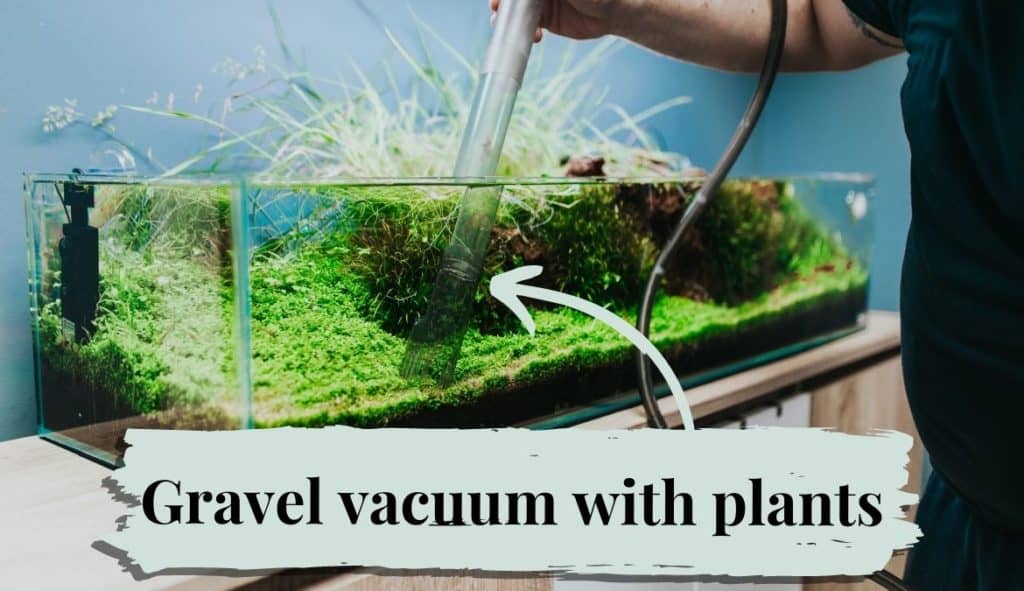
Additionally, while regular water changes are part of good aquarium hygiene, overdoing them can lead to the removal of essential nutrients that have been released into the water from fish waste and other sources.
Air stones pose a potential problem for cabron concentration as well. This is because they increase surface agitation, which increases the rate at which carbon diffuses into the atmosphere.
Do low-tech planted tanks need fertilizer?
Low-tech planted tanks can successfully grow without adding fertilizers. This is because all of the necessary plant nutrients are available in fish food and soil substrates. However, an aquarist must not remove these nutrients with water changes or gravel vacuuming before plants use them.
CO2 in Aquatic Plant Nutrition
Carbon dioxide (CO2) is essential for photosynthesis, as it allows plants to convert light energy into organic compounds. In low-tech tanks without CO2 injection, I rely on the natural CO2 production frombicarbonates in hard water, bacterial breakdown of organic matter, and bacteria breakdown of organic soil beneath my layer of sand.
Carbon is the limiting growth factor for most low-tech planted tanks. I have started experimenting with DIY CO2 systems to see if I can achieve good results for a reasonable cost.
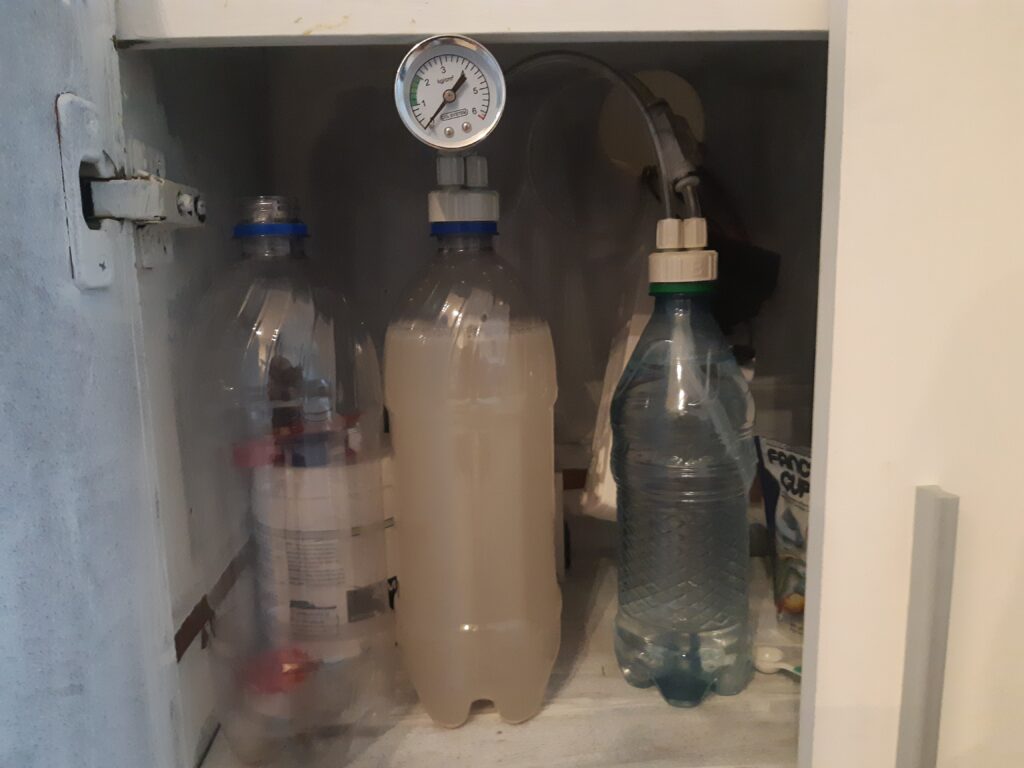
So far I have had mixed results and am not certain that this is the best long-term solution for me because of the amount of work required to replace temporary DIY CO2 canisters.
I have not experimented with high-tech CO2 injection but plan of doing so in the near future. Based on my understanding of plant requirements, I suspect that an increase in carbon will subsequently increase my plants’ demand for the other nutrients as well.
The limitation here is that decomposed fish food and soil substrate may not provide enough nutrients to meet this increased demand, which might require me to begin adding supplemental fertilizers to keep up.
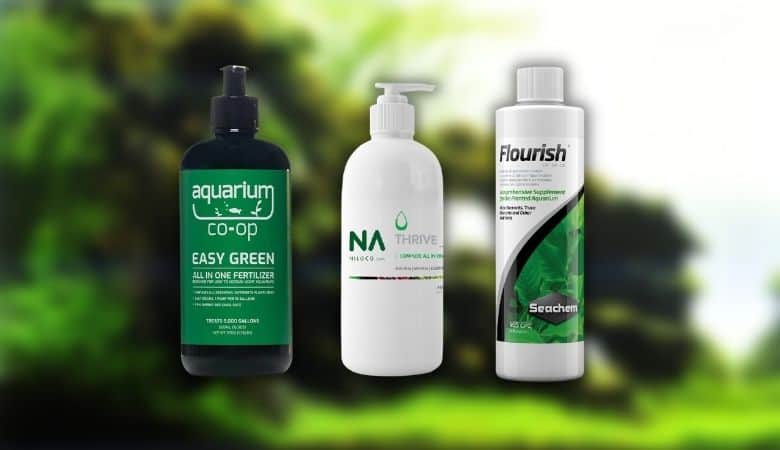
At the moment, my low-tech, no CO2 setup is working just fine and producing healthy and abundant plant growth.
Nutrient Delivery in Low-Tech Planted Aquariums
Role of Substrate in Nutrient Delivery
In a low-tech planted aquarium, the substrate plays a crucial role in nutrient delivery. My recommendation is a 1-inch layer of organic garden soil capped with 2-inches of sand.

The soil provides an abundance of plant nutrients for many months.
One thing I noticed is that root-feeding plants, such as cryptocorynes, benefit significantly from a well-fertilized substrate.
Studies have shown that some plants prefer uptaking nutrients from their roots while others prefer uptaking from their leaves.
Ultimately, there are certain nutrients, such as carbon and iron, that are more immediately available in your substrate compared to nutrients recently added to yout water columns via fish food or decaying organic material.
This is because it takes time for bacteria to breakdown these into raw elements that plants can uptake.
Role of Water Column in Nutrient Delivery
While substrate is essential for root-feeding plants, the water column is equally important for delivering nutrients to the rest of my aquarium plants. It’s also the way that metabolized fish food will reach your plants.
Sources
- Gerloff, G. C. (1975). Nutritional ecology of nuisance aquatic plants. National Environmental Research Center, Office of Research and Development, US Environmental Protection Agency.
- Walstad, D. L. (2012). Ecology of the planted aquarium: a practical manual and scientific treatise for the home aquarist. Echinodorus publishing.


